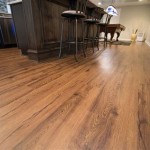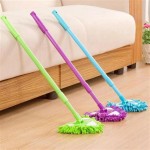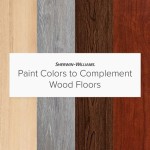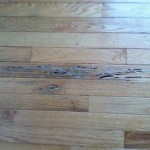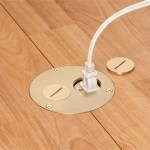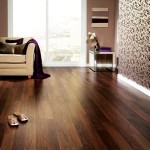Moisture Barrier Under Wood Floor: Ensuring a Durable and Healthy Floor
A moisture barrier is an essential component of a wood floor installation, especially in areas prone to moisture. It acts as a shield, preventing moisture from penetrating the wood and causing damage, such as warping, rotting, and mold growth. Installing a moisture barrier is crucial for safeguarding the longevity of your wood floor and maintaining a healthy indoor environment.
Understanding the Importance of a Moisture Barrier
Wood, a naturally porous material, readily absorbs moisture. When exposed to excessive moisture, wood expands and contracts, leading to warping, buckling, and cracking. This can damage the flooring itself and also affect the structural integrity of the subfloor. Moreover, moisture can create an ideal breeding ground for mold and mildew, posing health risks to occupants.
A moisture barrier effectively intercepts moisture coming from the subfloor, preventing it from reaching the wood flooring. This barrier can be a simple plastic sheet or a more advanced moisture-resistant membrane, depending on the specific needs and conditions of the installation.
Types of Moisture Barriers
Several types of moisture barriers are available, each with its unique properties and suitability for different applications. Here are some common types:
1. Polyethylene Sheeting:
Polyethylene sheeting is a cost-effective and widely used moisture barrier. It is available in various thicknesses and can be easily installed by overlapping and taping the seams. This material is effective against moisture, but it may not provide adequate protection against vapor transmission.
2. Moisture-Resistant Membranes:
Moisture-resistant membranes are a more advanced type of moisture barrier designed to resist both moisture and vapor transmission. These membranes are typically made from synthetic materials, such as polypropylene or polyethylene, and are available in different configurations, including rolls, sheets, and pre-installed vapor retarder boards.
3. Vapor Retarder Boards:
Vapor retarder boards, or plywood sheets with a built-in moisture barrier, are a convenient option for creating a moisture-proof subfloor. These boards offer both structural support and moisture protection, simplifying the installation process. However, they may be more expensive than other options.
Considerations for Choosing a Moisture Barrier
The choice of moisture barrier largely depends on the specific conditions of the installation. Factors to consider include:
1. Climate and Geographic Location:
The climate and geographic location play a significant role in determining the moisture levels and the need for a moisture barrier. Areas with high humidity or frequent rainfall require a more robust barrier to prevent moisture penetration.
2. Existing Subfloor Conditions:
If the subfloor is concrete, it may require a moisture barrier to prevent moisture from migrating upwards. In case of a wood subfloor, the condition of the wood and the presence of any existing moisture damage should be assessed before choosing a moisture barrier.
3. Type of Wood Flooring:
Different types of wood flooring have varying levels of sensitivity to moisture. Hardwood flooring, especially exotic woods, requires a more robust moisture barrier compared to engineered wood floors.
Installation of a Moisture Barrier
Installing a moisture barrier is a crucial step in ensuring the longevity and health of a wood floor. The installation process typically involves:
1. Preparing the Subfloor:
Before installing the moisture barrier, ensure the subfloor is clean, level, and free from any debris or obstructions.
2. Laying the Moisture Barrier:
Once the subfloor is prepared, lay the chosen moisture barrier. Overlap the sheets by at least 6 inches and seal seams with tape to prevent moisture from seeping through. For polyethylene sheeting, use a vapor retarder tape, while for moisture-resistant membranes, use a specific tape designed for that material.
3. Securing the Moisture Barrier:
Secure the moisture barrier to the subfloor using nails or staples, ensuring it is tightly attached. This prevents the barrier from moving or shifting during the installation of the wood flooring.
4. Installing the Wood Flooring:
After the moisture barrier is secured, proceed with installing the wood flooring according to the manufacturer's instructions.
Installing a moisture barrier under a wood floor is essential for preventing moisture damage and ensuring a durable and healthy floor. By understanding the types of moisture barriers available, considering the specific conditions of your project, and following proper installation practices, you can create a floor that will last for years to come.

Hardwood Floor Underlayment Ultimate Guide

Roberts 200 Sq Ft Roll Of Silicone Vapor Shield Underlayment For Wood Floors

What Is A Moisture Barrier And When It Needed For Flooring

Quietwalk 360 Sq Ft 6 X 60 3 Mm Underlayment With Sound And Moisture Barrier For Laminate Engineered Floors Qw360b1lt The Home

Quietwalk 100 Sq Ft 3 X 33 Mm Underlayment With Sound And Moisture Barrier For Laminate Engineered Floors Qw100b1lt

When Why You Need A Moisture Barrier For Wood Floors Easiklip

What Is A Moisture Barrier And When It Needed For Flooring

Mp Global S 100 Sq Ft Rolls 30 X In W 40 L 6 Mm T Polyethylene Moisture Vapor Barrier Underlayment For All Floors Mb006300100

Roberts 200 Sq Ft Roll Of Silicone Vapor Shield Underlayment For Wood Floors

Moisture Barrier For Wood Floors What You Need To Know
